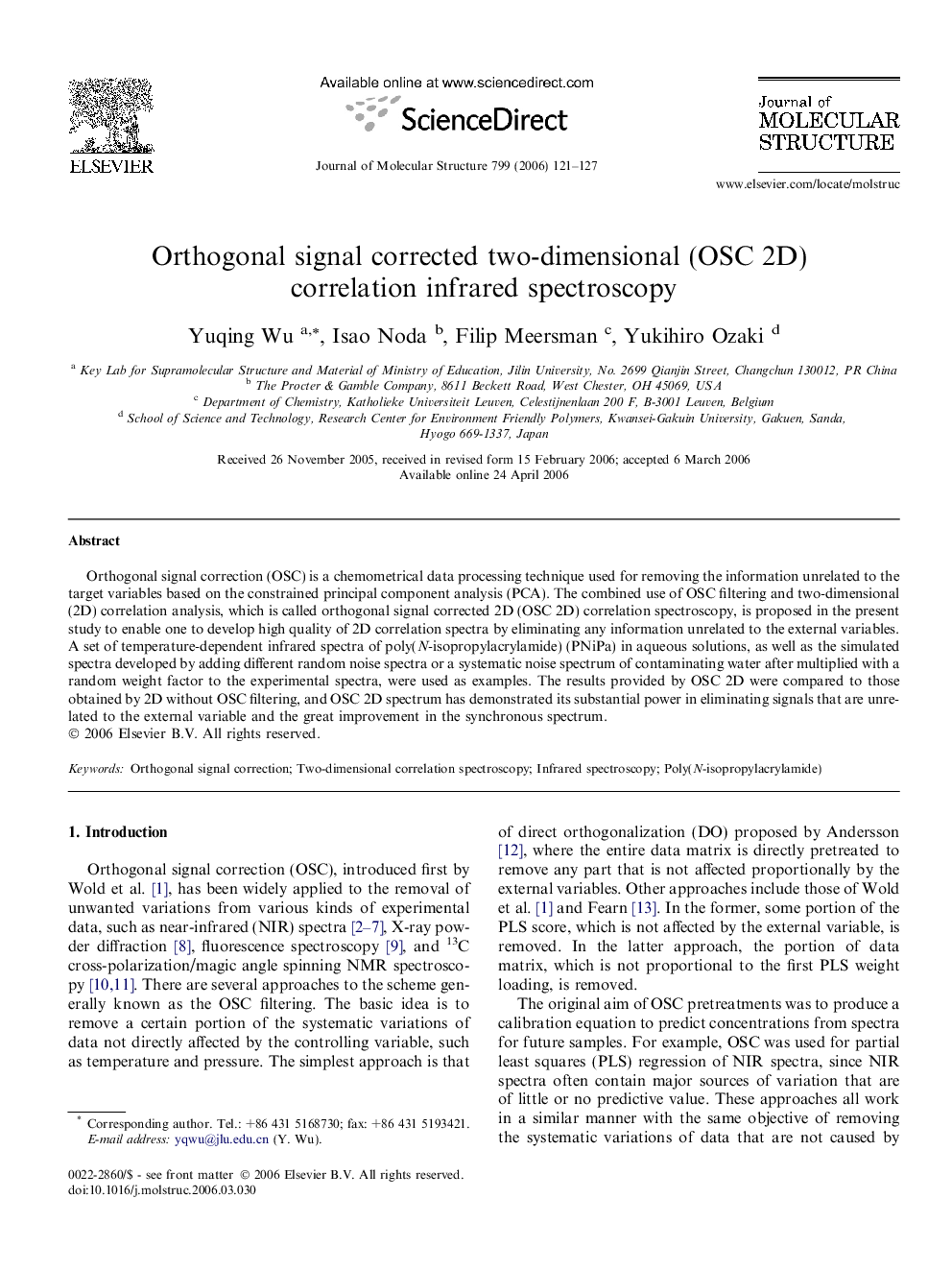| Article ID | Journal | Published Year | Pages | File Type |
|---|---|---|---|---|
| 1408259 | Journal of Molecular Structure | 2006 | 7 Pages |
Abstract
Orthogonal signal correction (OSC) is a chemometrical data processing technique used for removing the information unrelated to the target variables based on the constrained principal component analysis (PCA). The combined use of OSC filtering and two-dimensional (2D) correlation analysis, which is called orthogonal signal corrected 2D (OSC 2D) correlation spectroscopy, is proposed in the present study to enable one to develop high quality of 2D correlation spectra by eliminating any information unrelated to the external variables. A set of temperature-dependent infrared spectra of poly(N-isopropylacrylamide) (PNiPa) in aqueous solutions, as well as the simulated spectra developed by adding different random noise spectra or a systematic noise spectrum of contaminating water after multiplied with a random weight factor to the experimental spectra, were used as examples. The results provided by OSC 2D were compared to those obtained by 2D without OSC filtering, and OSC 2D spectrum has demonstrated its substantial power in eliminating signals that are unrelated to the external variable and the great improvement in the synchronous spectrum.
Keywords
Related Topics
Physical Sciences and Engineering
Chemistry
Organic Chemistry
Authors
Yuqing Wu, Isao Noda, Filip Meersman, Yukihiro Ozaki,
